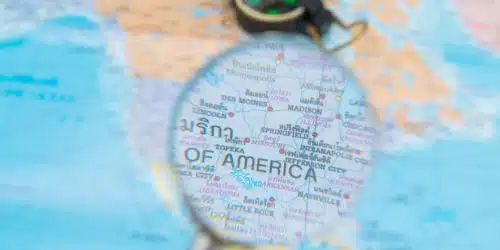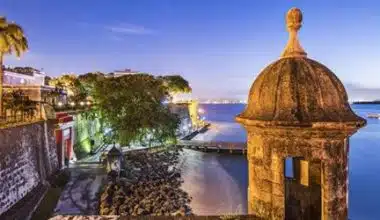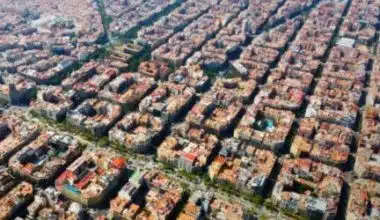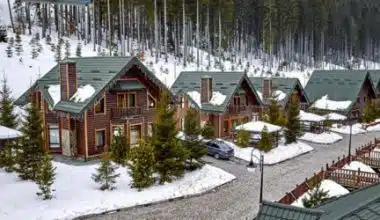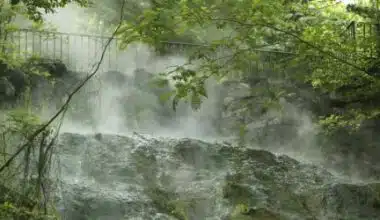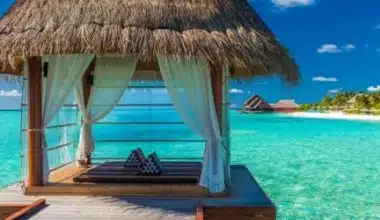Honduras is well-known for its Mayan ruins, varied environment, and welcoming people. It is Central America’s second-largest country and has a tropical climate with hot, humid summers and moderate winters. There are numerous fun facts about Honduras that might help you learn more about the nation and plan a vacation.
Although Spanish is the official language, many indigenous languages are widely spoken. Honduras’ capital is Tegucigalpa, and the Honduran Lempira is the country’s currency. If you’re up for a quick learning experience, here are some more Honduras facts to get you started.
Historical Facts About Honduras
Here are some of the prominent historical facts about Honduras.
#1. The country has two capitals.
Honduras has a unique system that divides the capital city into two sections: Tegucigalpa and Comayagüela.
There is a valley separating the two cities, which are both in the middle of the nation. Tegucigalpa is the larger city and the administrative capital, while Comayagüela is the constitutional capital.
The two cities are frequently referred to as “twin cities” and are linked by multiple bridges. Honduras’ twin capital system is a historical relic, and the two cities have grown together through time to form a unified metropolitan area.
#2. Art and Literature History
Honduras has a rich literary and artistic past, and the country is home to many outstanding writers and artists. The country’s art and literature reflect its unique cultural heritage.
Honduras has a rich oral culture, and numerous myths, folklore, and folktales have been passed down through generations. The country also has a thriving contemporary art culture, with numerous Honduran artists noted for their distinct styles and approaches.
#3. The American Story of Independence
Honduras obtained independence from Spain as part of the Central American Federation on September 15, 1821. This is one of the most important Honduran facts to know because the effect can still be seen in the culture and architecture.
Spain first colonized the country in the 16th century, and it remained a Spanish colony until the early 19th century. Honduras became a sovereign nation after obtaining independence and establishing its own government and laws.
#4. Honduras means ‘Depths’ in Spanish.
The name is thought to reflect Trujillo’s past as an anchoring bay. Honduras is derived from the term ‘fondura’ in the Leonese dialect of Spanish.
This could potentially be an allusion to Christopher Columbus’ purported comment, “Gracias a Dios hemos salido de eses Honduras.” The explorer’s words approximately translate to “Thank God we have departed from those depths” in English.
#5. Honduras was solely known as the eastern section of the country until 1580.
The western region of the country was also known as the Higueras. Furthermore, another early name for the country was Guaymuras, which was revived in 2009 as the name of the political discourse.
#6. Hondurans are frequently referred to as Catrachos or Catrachas.
The surname of the Spanish Honduran General Florencio Xatruch is where Nicaraguans came up with this nickname.
In 1857, he led the Honduran armed forces against an attempted invasion by North American adventurer William Walker. The people’s nickname is not considered pejorative but rather positive.
#7. Christopher Columbus originally explored Honduras in 1502.
On July 30, 1502, Christopher Columbus discovered Honduras during his fourth journey. He arrived in Guanaja and dispatched his brother, Bartholomew, to scout the island they discovered.
He later discovered that the island was populated by Mayans who possessed valuable minerals that the island was abundant in. Columbus then claimed the region for the King of Spain.
Before the Columbian period, Honduras was a part of the Mesoamerican cultural region.
Historians think that the Mayan civilization flourished in the extreme west before the arrival of the Columbian colony. Copan was also one of the most powerful and well-studied states within the country’s limits.
#8. Honduras has Maya ruins that visitors can explore.
For many years, much of the Mayan city has been conserved, and many of its major treasures have been relocated to museums and indoor storage facilities. The location also contains the world’s longest petroglyph, which is a UNESCO World Heritage Site.
The Maya ruins consist of enormous free-standing figures and temples with intricate carvings. Symbols are also engraved on the faces of the rocks, which historians are still deciphering to this day.
#9. Honduras is home to the world’s second-largest coral reef.
The Belize Barrier Reef is the world’s second-largest coral reef, after the Great Barrier Reef. It is a 300-kilometer-long segment of the 900-kilometer-long Mesoamerican Barrier Reef System.
This route runs from Cancun, located on the northernmost tip of the Yucatan Peninsula, via the Riviera Maya, to Honduras.
#10. Honduras has an abundance of natural resources.
Minerals, tropical fruits, and sugar cane are among its best exports. Honduras also has a thriving textile sector, which sells to other countries.
These exports are one of the key sources of revenue for the country’s economy today.
#11. Honduras’ flag is merely two colors.
The Republic of Honduras’ flag only features the colors blue and white. The five stars on their flag also represent the five Central American countries.
More specifically, the central star on the flag depicts Honduras, the only Central American country that shares borders with the other four.
#12. Honduras’ capital is Tegucigalpa.
The country’s highlands surround Tegucigalpa, which is located on hilly terrain. It is located about 3,200 feet above sea level.
The Spanish built this city as a mining town in the 16th century, and it is also the biggest in the nation.
Honduras’ Cultural Facts
Here are some of the cultural facts about Honduras.
#1. Santa Week
In Honduras and many other Latin American countries, Semana Santa, or Holy Week, is a major religious event.
It is a week-long festival that takes place in the week preceding Easter Sunday and remembers Jesus Christ’s passion, death, and resurrection.
During Semana Santa, many Hondurans join in religious processions through the streets, carrying sculptures of Jesus and other religious icons.
#2. Garifuna National Festival
Honduras hosts an annual cultural festival known as the National Garifuna Festival. The celebration honors the Garifuna, an indigenous community with a distinct mix of African and indigenous ancestry.
The Garifuna people are indigenous to Central America’s Caribbean coast, and their culture is an essential component of the region’s history and heritage.
Every year, hundreds of visitors attend the National Garifuna Festival in Tela, Honduras, on the country’s north coast.
#3. Punta
Punta is a prominent and cherished music genre in Honduras, enjoyed by both natives and visitors. This is a genre of dancing music that evolved on Central America’s Caribbean coast. It stands out for its quick tempo and powerful beats.
Punta is often performed with a variety of instruments, such as drums, percussion, and brass. It’s famous for having appealing tunes and danceable beats. The genre is a vital element of Honduras’ cultural and musical environment, and it is frequently heard at festivals, parties, and other social gatherings.
#4. Soccer
Soccer, commonly known as football, is a well-liked and popular sport in Honduras. Honduras’ robust soccer culture is one of the country’s fun facts. People of all ages participate in and watch the sport.
Honduras’ national soccer squad is known as the “Honduran Catrachos,” and they have competed in a number of international competitions, including the FIFA World Cup. Soccer is a source of national pride and an integral aspect of Honduras’ sporting culture.
Food Facts From Honduras
Honduras has a rich and diversified culinary culture, with numerous popular dishes. The following are some of the most popular foods facts in Honduras:
#1. Pupusas
These are thick, stuffed corn tortillas loaded with a variety of toppings like cheese, beans, and meat. Pupusas are a popular dish in Honduras, and they are frequently served with pickled cabbage and tomato sauce.
#2. Baleadas
Beans, cheese, and avocado are stuffed into large flour tortillas. Baleadas are a popular street meal in Honduras and are frequently topped with meat, salsa, and sour cream.
#3. Tortillas
Tortillas, produced from corn or wheat flour, are a staple dish in Honduras. They’re frequently eaten with beans, cheese, and other toppings, or they’re used as a base for foods like tacos and burritos.
#4. Chicken a la Coco
Chicken is cooked in coconut milk in this classic Honduran dish. It’s typically served with rice, beans, and plantains.
#5. Soup with Caracol
This traditional Honduran soup is made with conch or sea snails and is a popular dish. It is frequently accompanied by vegetables and spices.
#6. Tico Plato
Plato tpico, or “typical plate,” refers to classic Honduran foods that are often served as a full meal. In Honduras, a typical plato tpico can include rice, beans, meat, veggies, and other accompaniments.
Interesting Honduras Facts for Kids
#1. Official Title
Honduras’ official name is the Republic of Honduras. Honduras is a sovereign republic in Central America with a president and a unicameral legislature at the helm of a democratic system.
The country is divided into 18 departments, which are subdivided further into municipalities. Tegucigalpa, Honduras’ capital, is located in the country’s central region.
#2. National Money
Honduras’ official currency is the Honduran Lempira, abbreviated as HNL. The Lempira is divided into 100 centavos and is named for the indigenous leader of the 16th century, Lempira.
It is crucial for Honduran information to be understood because Lempira is utilized throughout the country. It is also the country’s sole legal tender. The Central Bank of Honduras issues the money, which is available in a variety of denominations, including coins and banknotes.
#3. Honduras observes Children’s Day every year.
On September 10th, Honduras commemorates Children’s Day. The festival is known as Dia de Los Ninos by the locals.
The notion of the day was introduced in 1 Children’s 857 and was first recognized as an official holiday by the Republic of Turkey in 1920.
Important Honduras Facts for Travelers
#1. The Bay Islands
Honduras’ Bay Islands are a popular tourist destination because of their lovely beaches, pure blue waters, and diverse marine life.
They are made up of eight large islands off Honduras’ Caribbean coast: Roatan, Utila, Guanaja, Barbareta, Morat, Helene, and Morat’s Cays. These are some of the most beautiful natural wonders in Honduras.
#2. The coastline of the Caribbean
Having said that, Honduras boasts a vast Caribbean coastline that spans more than 700 miles along the country’s eastern border. The country has several gorgeous beaches and coral reefs, which are popular with both visitors and locals.
Honduras’ Caribbean coast is recognized for its white sand beaches, beautiful waters, and diverse marine life, making it an ideal destination for scuba diving, snorkeling, and other water activities.
#3. Landscape Varieties
Honduras’ scenery is diversified, with mountains, beaches, and forests. The Central American country has a tropical climate with hot, humid summers and moderate winters.
The country’s varied topography and geography, which include mountains, valleys, forests, and coasts, have an impact on the landscapes.
#4. It is Central America’s Largest Rainforest
Honduras is the largest rainforest in Central America, covering around 4.4 million acres. The rainforest is noted for its great biodiversity and is home to numerous endangered animals, such as jaguars, pumas, and tapirs.
Many indigenous people have been living in the Mosquitia Rainforest for millennia. It is a precious natural resource in Honduras that the government has protected.
#5. Copan, a Mayan city, is a UNESCO World Heritage Site.
Copan, a Mayan metropolis, is a UNESCO World Heritage Site with many ancient ruins and relics. This is one of the most prominent Mayan cities in Central America, located in western Honduras on the border with Guatemala.
The city was created approximately 400 AD and thrived for over 1,000 years before being abandoned in the 9th century. Copan is famous for its magnificent pyramid constructions, temples, and palaces, which were constructed employing excellent engineering and architectural skills.
Honduras’ Common Facts
#1. The Motto of the Organization
Honduras’ official motto is “Dios, Unión, Libertad,” which translates as “God, Union, Freedom.” The slogan emphasizes the country’s rich religious and cultural heritage, as well as its commitment to unity and freedom. The motto appears on the national coat of arms and represents the country’s national identity.
#2. The Scarlet Macaw is Honduras’ national bird.
Honduras’ national bird is the scarlet macaw. It is a huge, brightly colored bird endemic to Central and South America, distinguished by its vibrant red, yellow, and blue plumage.
In addition, the scarlet macaw is a prominent Honduran symbol, featured on the country’s coat of arms and national flag. The bird is revered for its intelligence and ability to mimic human speech, and it is regarded as a symbol of wisdom and liberty.
One of the most important facts about the Honduran national bird is that it is a threatened species. Many countries, including Honduras, have laws protecting the scarlet macaw.
#3. The Garifuna People
The Garifuna are an important cultural group in Honduras and many other Central American countries. They are known for their rich cultural traditions and vibrant way of life and have a unique blend of African and indigenous ancestry.
The Garifuna people have a long history, and their culture is an essential element of the cultural heritage of the region.
Other Facts About Honduras
#1. La Tribuna is one of Honduras’ most widely read newspapers.
Oscar Armando Flores Midence, a writer and lawyer, created Honduras’ La Tribuna newspaper in 1976. Midence has been the publication’s president since its inception
Midence eventually resigned from his post, which he did in 2009. He chose his son, Carlos Roberto Flores, to succeed him as president of La Tribuna.
#2. Utila is Honduras’ smallest bay island.
The entire eastern side of this island is capped with a thin veneer of basaltic volcanic rocks. Pyroclast cones, such as the 243-foot Pumpkin Hill, formed this unique land formation.
The island of Utila is currently experiencing fast growth in tourism, with recreational diving serving as the primary draw. The island is also well known for having some of the best diving in the world.
#3. San Pedro Sula, Honduras, is one of the world’s most violent cities.
There were 111.03 killings per 100,000 residents in the city in 2019. Gangs, drug addiction, and poverty are also problems in the city.
#4. La Ceiba is the entry point to Honduras’ Bay Islands.
La Ceiba is a Caribbean port city in northern Honduras and the gateway to the bay islands of Roatan, Utila, and Guanaja. It is also situated along a large barrier reef with popular diving spots.
The site also has a diverse marine environment, including whale sharks.
#5. Televicentro is a major television station in Honduras.
This television station is based in the city’s capital. Televicentro was established in 1987 to bring together four other television networks.
Canal 5, Telecadena 7 y 4, Telesistema Informativo (TSi), and Mega Show Business TV were among them.
#6. Honduras has a national football team that serves as the country’s representative.
Honduras’ Men’s National Team competes in Men’s Football League tournaments. This sports team, known as Los Catrachos, was created in 1921.
In September 1921, it played its first international football match against the Guatemalan squad.
#7. Honduras was one of the first countries to prohibit smoking in private residences.
Honduras’ new anti-smoking regulations are aggressively enforced. The law also allows family members to contact the police if someone smoking inside their homes refuses to stop smoking.
Smokers must also keep six feet away from nonsmokers and only smoke in authorized areas.
#8. Honduras’ national bird is the Scarlet Macaw.
The red, blue, and yellow plumes of this bird, also known as the Aro Macao, are distinctive. These birds are most commonly found in forests in northern Central America.
The IUCN has also designated this bird as endangered. In order to raise awareness of this species of bird, the Honduran Congress designated the Scarlet Macaw as its national bird in 1993.
#9. Honduras is Central America’s second-largest country.
In Central America, Honduras is only second in size to Nicaragua. Honduras is divided into four regions: the central highlands, the eastern Caribbean lowlands, the northern coastal plains, and the Pacific lowlands.
#10. Honduras has earned the moniker “Banana Republic.”
The phrase Banana Republic refers to the period when bananas were the country’s principal export. This word refers to the majority of Latin American countries that have a plentiful supply of banana exports.
#11. The Republic of Honduras has a life expectancy of 74.6 years.
Hondurans have a life expectancy of 74.6 years old as of 2018. Since 1960, when life expectancy was slightly about 50 years old, this has climbed dramatically.
Violence and coronary heart disease are two of the main causes of death in the country. Strokes and renal failure are also rather common among Hondurans.
#12. Those who are members of the Mara Salvatrucha are tattooed from head to toe.
The Mara Salvatrucha, also known as the MS-13, is a transnational criminal organization that began in 1970 in Los Angeles, California. While it was founded to protect Salvadoran immigrants from other gangs in the area, it gradually evolved into a more traditional criminal organization.
The group has territory in various countries, including Honduras, Canada, and the United States. Members of the organization are mostly from Central America.
#13. Honduran buses are known as chicken buses.
Locals frequently use these buses to transport goods, and they frequently have brightly painted exteriors. This involves live animals such as chickens, hence the name.
The phrase is thought to have originated in Guatemala and has subsequently become a common mode of transportation.
#14. The most popular event is Sawdust.
The Sawdust Alfombras de Comayagua is a Honduran event. It is commemorated with the creation of enormous tapestries based on religious themes out of colored sawdust.
When the tapestry is complete, a holy march that represents the stations of the cross tramples on it. Each piece of artwork has an evangelical message and is made with cardboard molds.
#15. Honduras is home to one of the world’s oldest clocks.
The Cathedral de la Inmaculada Concepción in Comayagua, Honduras, was inaugurated in December 1711 during the colonial era. The inside has an Arab-built clock from around 1100, during the Spanish conquest.
#16. The white-tailed deer is the Republic of Honduras’ national mammal.
The Yucatan white-tailed deer is Honduran wildlife’s national symbol. The National Congress of the Republic of Honduras established this in 1993.
#17. Olimpia is one of Honduras’ largest soccer clubs.
In terms of matches played and victories, it is also one of the most successful soccer clubs in Central America. Olimpia is up 55 points as of June 2020, for a total of 1525 points in its lifetime.
#18. Honduras’ national flower is Rhyncholaelia Digbyana.
This orchid, formerly known as Brassavola digbyana, succeeded the rose as the nation’s flower in November 1969. This species of natural flower can also be found in Guatemala, Mexico, and Costa Rica.
On November 26, 1969, the flower was named Flor Nacional de Honduras after Honduran botanist Jose Antonio Molina Rosito made its initial discovery.
#19. Winston Palacio is Honduras’ most accomplished footballer.
This Honduran midfielder plays for Real Sociedad. Before heading to England, he also played for the Honduran soccer clubs Olimpia and Victoria.
Since 2003, Winston Palacios has been a regular for Honduras. He also assisted the team in qualifying for the FIFA World Cups in 2010 and 2014.
The Caribbean Sea and the North Pacific Ocean surround Honduras. It also borders Guatemala in the west, El Salvador in the southwest, and Nicaragua in the southeast.
#21. Honduras’ climate is typically tropical.
Honduras is divided into three major topographical regions. Each of the three has a unique climate, yet they all have a rainy tropical climate.
The Caribbean lowlands enjoy tropical wet weather with high temperatures and humidity all year. Honduras receives rainfall on a regular basis throughout the year.
#22. There is only one natural lake in Honduras
Lake Yojoa is Honduras’ largest and only natural lake. The lake’s surface area is around 79 square kilometers, with an average depth of 15 meters.
Numerous volcanoes have carved out a valley where the lake is. It is also a favorite fishing area among locals, with a diverse wildlife population nearby.
#23. Honduras’ fertility rate in 2012 was five births per woman.
As a result, the country’s population gradually increased until 2017, when newly recorded data revealed that the birth rate had dropped to 2.50 births per woman. As of 2018, the infant mortality rate was 15.1 fatalities per 1000 live babies born.
#24. Honduras’ president’s son was assassinated in 1997.
Ricardo Ernesto Maduro, the son of Honduran President Ricardo Maduro, was kidnapped in 1997 at the age of 25. After being murdered, the son’s body was discovered two days later.
The death of Maduro’s son pushed him to run for president, and he was finally elected as a formal presidential candidate.
#25. Honduran currency bears the name of an Indian chief.
According to folklore, the chief perished while defending his country from Spanish invaders. Despite the fact that his efforts were futile, he was still recognized by the use of his name as the name of the country.
He is also seen on the 1 Lempira note, as well as the 20 and 50-cent coins.
#26. Honduras’ most important export is coffee.
Since the mid-2000s, coffee has been Honduras’ most important export. According to reports, the country produced over 3.6 million bags of Arabica coffee in 2019.
Honduras also accounts for 4% of the global coffee market, demonstrating its importance in the coffee business.
#27. Coconut milk is a prominent element in many Honduran cuisines.
The Sopa de Caracol, which comprises huge conch chunks cooked in coconut milk, is one of Honduras’ most famous meals. Additional conch broth, as well as cassava, spices, garlic, and chili, are added to the dish.
#28. Marriage before the age of 18 is prohibited in Honduras.
Honduras approved a new rule in 2017 prohibiting minor children from lawfully marrying. In accordance with this rule, the Honduran government raised the minimum age to 18 and eliminated all exceptions for child marriage, even with parental agreement.
This was likewise a unanimous vote among Honduran legislators. That’s a lot of reassuring Honduras facts.
#24. The highest point in Honduras is Cerro Las Minas.
This mountain is located on the western border of the country in the rocky and secluded Lempira Department. The Honduran government established a national park in 1987 for visitors to the mountain.
The Cerro Las Minas, which towers over the rest of the country, stands at an elevation of 9,420 feet and spans 6,788 feet.
#25. Bats account for half of all mammal species in Honduras.
Honduras has a large native bat population that lives in protected environments. Two of these caverns are in western Honduras and are legally protected to conserve the country’s wildlife.
#26. Christianity is the dominant religion in Honduras.
In 2017, it was estimated that 76% of the country’s inhabitants practiced Christianity. Honduras’ pre-Hispanic communities were predominantly polytheistic Mayans who converted to Christianity once the Spanish Empire introduced it in the 16th century.
Many more have converted to other religions in recent years, including Catholicism, Jehovah’s Witnesses, and Mennonites.
#27. Honduras was the first Central American country to build movie theaters.
The Rosario Mining Company, founded in San Juanito, built the first theaters in Honduras. This is one of the first forms of public entertainment in all of Central America. One of the more interesting Honduras facts
#28. Honduras is home to a number of venomous snakes.
Honduras is home to several deadly snake species. The rare palm pit viper, rattlesnakes, and moccasins are among them.
#29. The Patuca River is the Republic of Honduras’ longest river.
This river, located in northeast Honduras, is famous for being the longest in Central America. It is 500 kilometers long and covers an area of 23,900 square kilometers.
Discovering More Interesting and Fun Honduras Facts
Honduras is a lovely and diverse Central American country. It features a diverse scenery that includes mountains, woods, and beaches, as well as a rich cultural and historical legacy. The country is well-known for its distinctive music and dancing, as well as its vivid art and literature.
Furthermore, Honduras boasts a tropical environment and various plant and animal species, including the national bird, the scarlet macaw, and the national flower, the orchid. The country has a rich history, and its ancient Mayan ruins bear witness to it.
These are just a few interesting Honduran facts; there is much more to learn about this wonderful country.
- 51+ INTERESTING FACTS ABOUT GUATEMALA
- TOP 10 SAFEST COUNTRIES IN SOUTH AMERICA: The Ultimate Guide
- COSTA RICA IN DECEMBER: Weather & Best Places To Visit
- 17+ Most Beautiful Cities in the World 2023, Revealed (Updated)
- BEST TIME TO CRUISE THE CARIBBEAN
